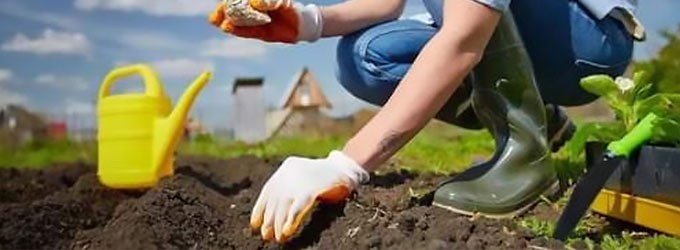The rotary drum dryer is essential in fertilizer production and is an ideal choice for drying fertilizers. It is commonly used to dry organic fertilizers, compound fertilizers, and inorganic fertilizers, reducing the moisture content of fertilizer granules or powders from 70%–80% to 13% or less.
Why dry fertilizers?
Drying is a crucial step in fertilizer production, directly affecting yield, quality, and energy consumption.
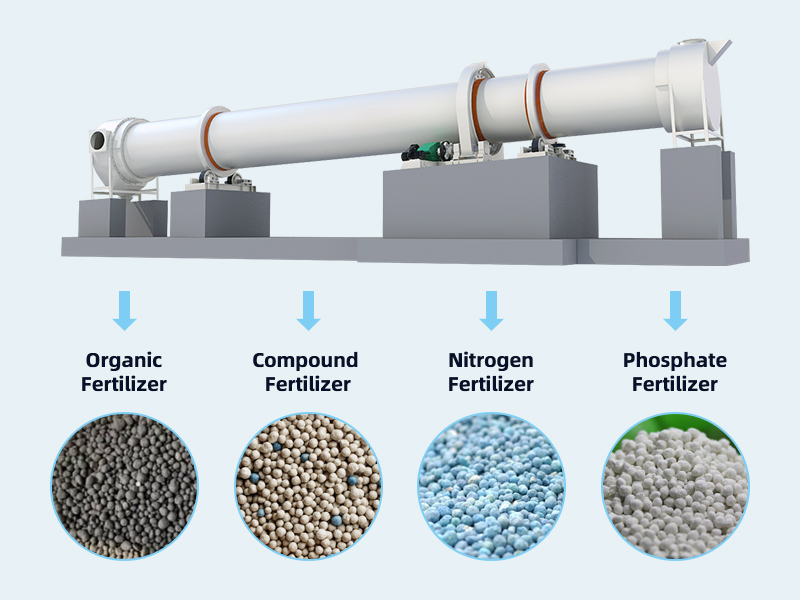
Benefits of drying fertilizers include:
- Preventing clumping: Wet fertilizer granules have high moisture and are prone to breaking and clumping. Dried fertilizers have lower moisture, making them more durable for storage, and less likely to clump or spoil.
- Extending shelf life: Dried fertilizers are more stable and retain their effectiveness longer.
- Improving efficiency: Dry fertilizers are easier to spread evenly, increasing their efficiency.
- Reducing weight: Drying lowers the moisture content, reducing weight and volume, which cuts transportation costs.
- Secondary granulation: The dryer not only dries but can also perform secondary granulation, improving the solubility of organic fertilizers, increasing granulation rate, ensuring uniform particles, and boosting yield.
Rotary drum dryers are commonly used to dry organic fertilizers, compound fertilizers, and inorganic fertilizers (nitrogen fertilizers, phosphate fertilizers, and potash fertilizers):
| Fertilizer Types | Names | Composition | Characteristics |
| Organic fertilizer | Livestock manure, weeds, stalks, compost, etc. | Organic material(≥45%) | Rich in organic matter and microorganisms, with a slow-release effect |
| Compound (NPK) fertilizer | Ferrous sulfate | N (8%), P205 (45%) | Contains multiple elements, low hygroscopicity, resists clumping |
| KDP | P205 (51%), K20 (34%) | ||
| Nitrogen fertilizer | Urea | N (46%) | Certain hygroscopicity, slow fertilizer effect |
| Ammonium sulfate | N (21%) | Weak hygroscopicity, soluble in water | |
| Phosphate fertilizer | Superphosphate | P205 (12–18%) | Caking, water solubility |
| Phosphorite powder | P205 (10–25%) | A bit slow fertilizer effect | |
| Potash fertilizer | Potassium chloride | K20 (50–60%) | Caking, soluble in water |
| Potassium sulfate | K20 (50–58%) | Hard to caking, soluble in water |
Rotary drum dryer: key equipment for fertilizer drying
The rotary drum dryer is a key piece of equipment for drying fertilizers. Its working principle involves an inclined and rotating drum that continuously tumbles the fertilizer inside. Hot air enters the drum from one end, ensuring thorough contact with the fertilizer and rapidly evaporating the moisture. The dried fertilizer is then discharged from the other end.
FTM Machinery's fertilizer dryer has undergone several upgrades and now features the latest drying technology for fast, uniform drying of various types of fertilizers, enhancing product quality.
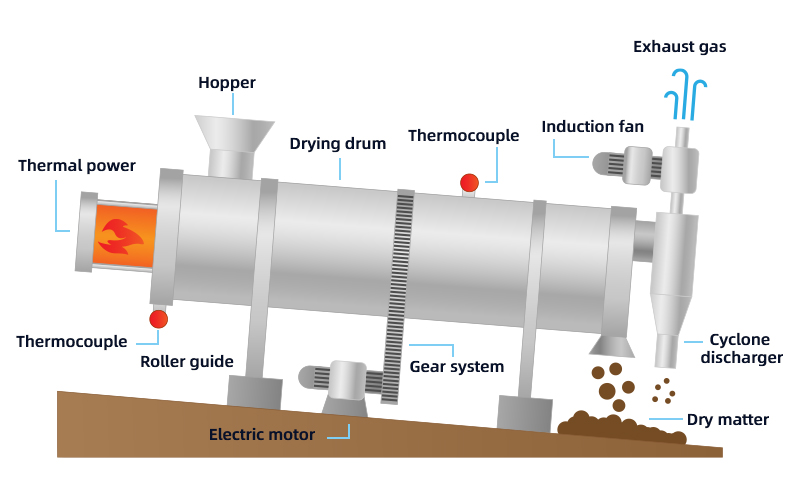
1. Uniform drying
The rotary drum dryer provides precise control over heating, ensuring that every particle of fertilizer is evenly exposed to hot air, resulting in consistent moisture removal and high-quality output.
2. Energy efficiency
The dryer effectively utilizes thermal energy, with most of the supplied heat used for evaporating moisture. Advanced heat recovery systems and insulation features help minimize energy consumption, achieving thermal efficiency of 80%–90%.
3. High throughput
The dryer can handle up to 76 tons of fertilizer per hour, meeting the demands of both continuous and batch production processes, and fulfilling stringent production requirements.
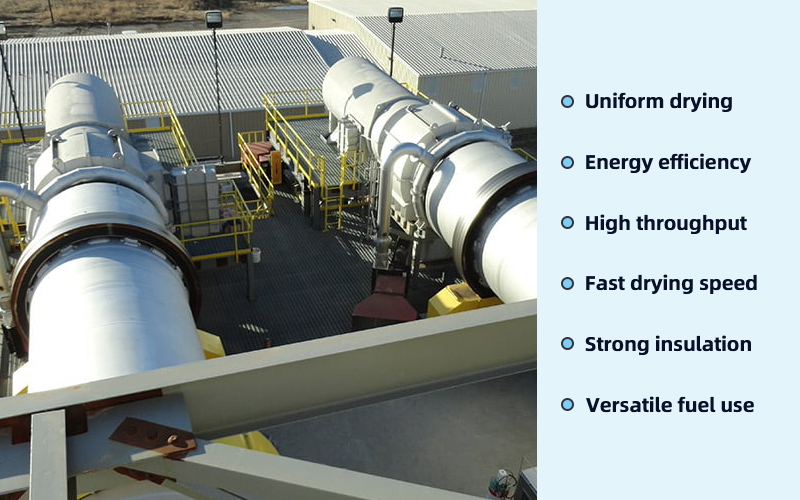
4. Fast drying speed
The dryer offers excellent heat and mass transfer capabilities, ensuring a large temperature gradient and quick moisture evaporation. Drying speeds can reach 30–70 kg/(m²·h).
5. Strong insulation
The drum is equipped with composite silica insulation coatings, silica fiber boards, and mineral wool boards, reinforced with wire mesh. This design reduces heat loss, maintains high internal temperatures, and accelerates the drying process.
6. Versatile fuel use
The rotary drum dryer can use various fuels, such as coal, natural gas, biogas, and biomass pellets, allowing users to choose based on available resources and reduce operating costs.
4 key factors in the fertilizer drying process
Drying is a crucial step in fertilizer production, directly affecting the final quality of the product. After the fertilizer is granulated by a disc granulator, it is sent to a rotary drum dryer for drying. Here are four key factors for effective drying:
1. Residence time in the rotary dryer
Organic fertilizer typically needs to stay in the rotary drum dryer for over 22 minutes. A longer drum length means more time for the material to be heated, which improves heat energy use.
2. Temperature in the dryer
To protect beneficial microbes, keep the drying temperature below 60°C. The hot air contacting the material should not exceed 130°C.
The temperature at the inlet and outlet of the rotary dryer should be relatively stable:
| Types | Temperature difference between head and tail | Inlet gas temperature fluctuation range | Outlet gas temperature fluctuation range | Exhaust gas temperature |
| Temperature | About 100℃ | Within 10℃ | Within 2℃ | Within 75℃ |
For example, when using urea, keep the dryer head temperature below 160°C and the tail temperature below 70°C to avoid issues like melting or softening.
3. Airflow in the dryer
The air volume directly affects the drying effect. It is generally calculated by the cross-sectional area of dryer barrel, and 7000 m/h is appropriate. Wind speed should be less than 2 m/s. A control valve should be installed on the pipeline before or after the fan to adjust the air volume.
For example, install a valve at the blower's intake. Increase airflow if the furnace temperature is too low, or reduce airflow if the temperature is too high.
4. Heat exchange in the dryer
Organic fertilizers can melt and stick to the walls at high temperatures, increasing the equipment load. This reduces the lifting effect of the plates inside the rotary dryer, lowering heat exchange efficiency and making it harder for materials to dry and form pellets. It also makes equipment cleaning more difficult.
To address this, reduce the density of the lifting plates and minimize any dead zones or external impacts.
Common problems in fertilizer drying
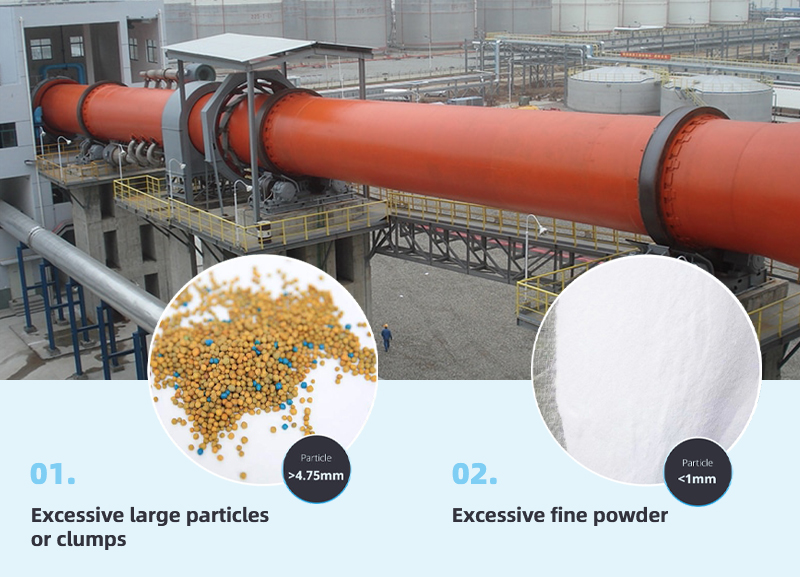
Problem 1: Excessive large particles or clumps
If the dryer discharge contains more than 15% large particles (>4.75 mm) or clumps, it may be due to the following reasons:
| Reasons | Solutions |
| 1. Excess moisture in granulation or high initial moisture | Reduce water in granulation or use dewatering equipment |
| 2. Low dryer temperature | Increase temperature and check combustion system |
| 3. Uneven screening | Add or adjust screening equipment |
| 4. Incorrect rotation speed | Adjust to the optimal speed |
Problem 2: Excessive fine powder
If the fine powder (>1 mm) content discharged from the dryer exceeds 15%, it may be due to the following reasons:
| Reasons | Solutions |
| 1. Insufficient liquid phase during granulation | Increase steam and moisture in the granulator |
| 2. Low viscosity of compost | Adjust formula and increase viscosity additives |
| 3. Excessive drying temperature or time | Lower temperature or shorten drying time |
| 4. Uneven mixing of returned and fresh materials | Improve mixing equipment or extend mixing time |
| 5. Equipment wear or aging | Regularly inspect and maintain equipment, replace worn parts |


